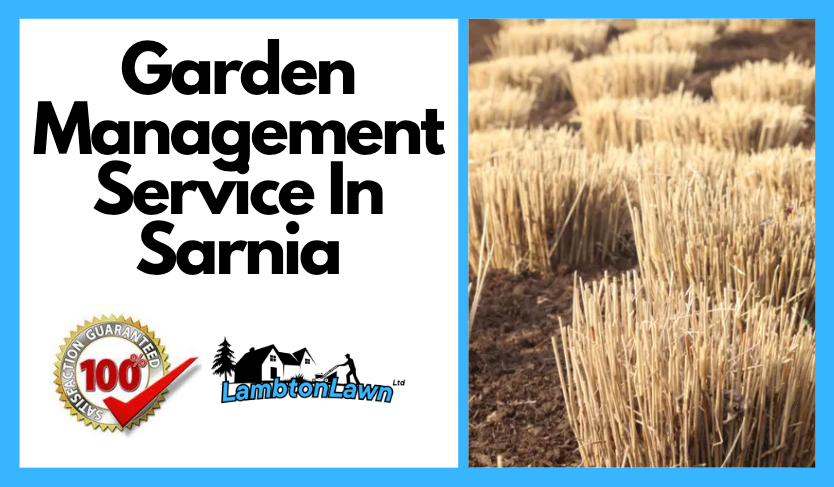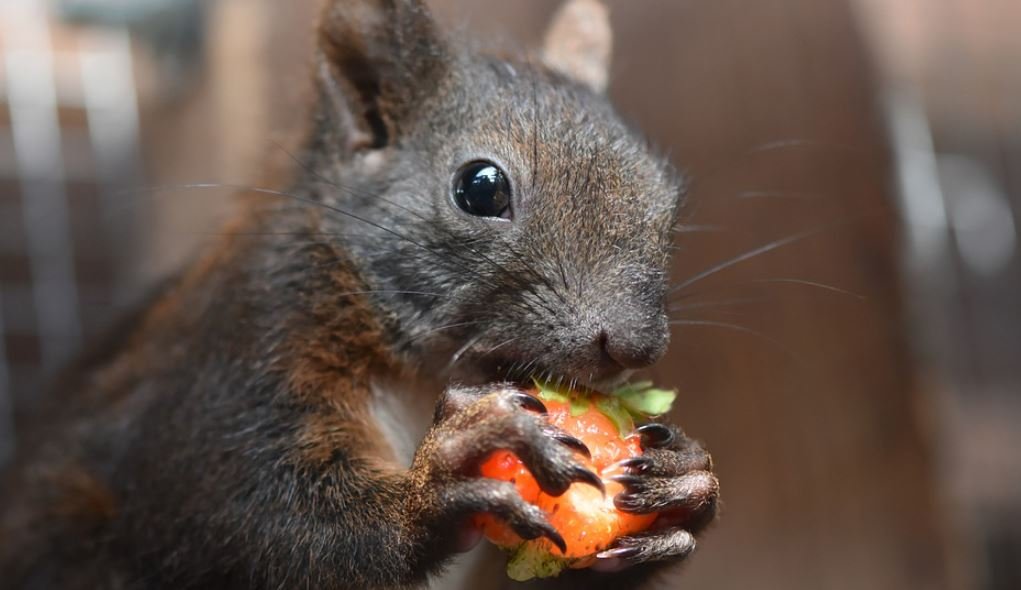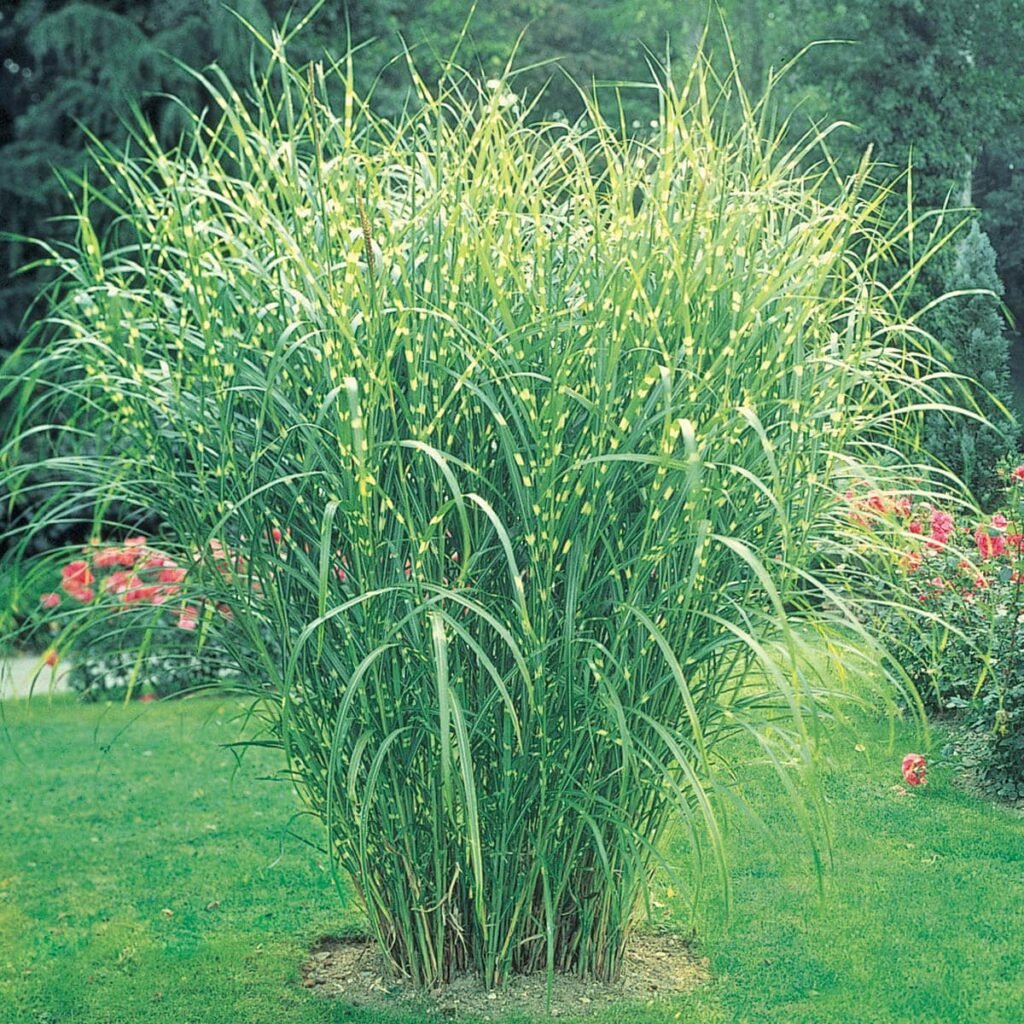
A Brief Description of Little Zebra Grass
Miscanthus sinensis, or more commonly known as Little Zebra Grass, is a perennial grass that is compact and admired for its eye-catching aesthetics. Its green foliage marked with bright golden-yellow bands, gives it a striking resemblance to a zebra’s coat pattern – hence its distinct name.
Further enhancing your gardens appeal, little zebra grass has very nice fluffy pinkish-bronze flower plumes which blooming in late summer. This plant, with its moderate growth speed, can achieve heights of 3 to 5 feet. It’s an ideal decorative grass for various garden layouts.
Growing Little Zebra Grass in Ontario
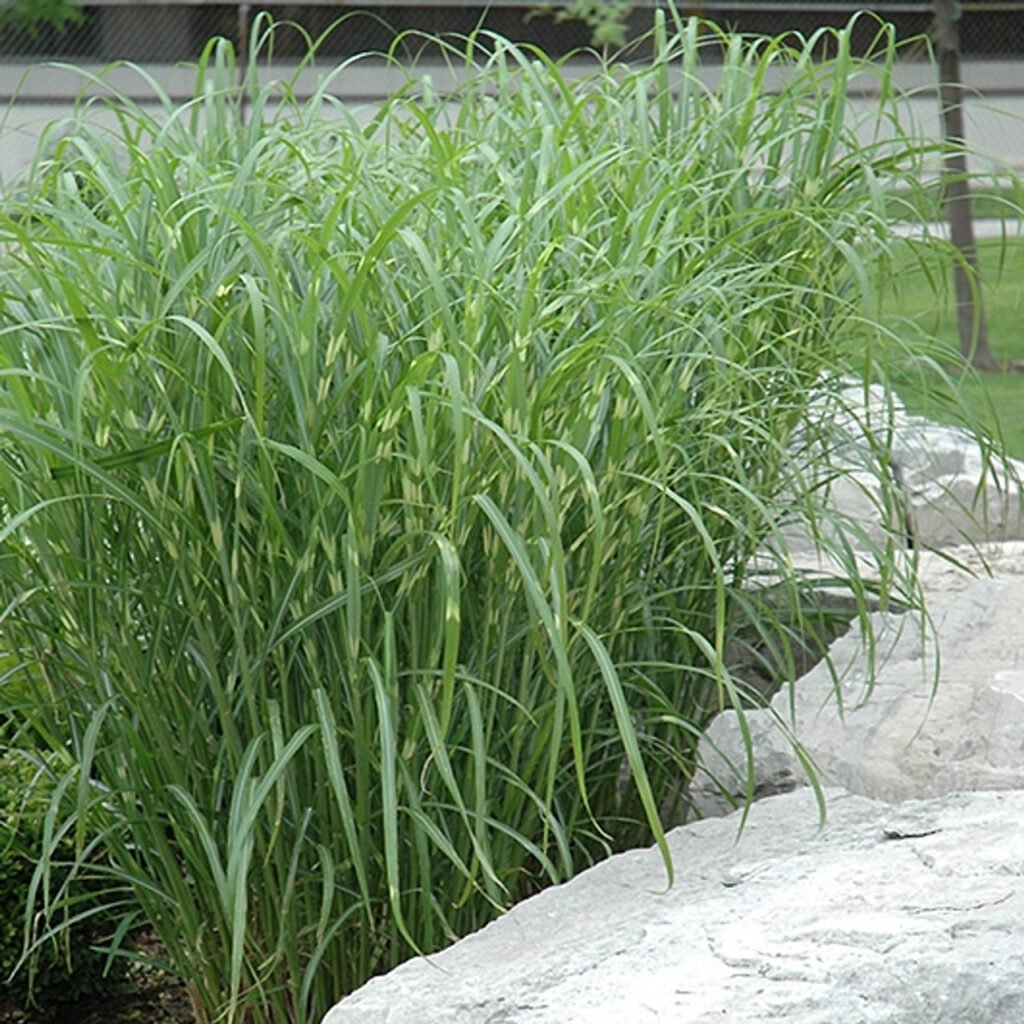
Growing little zebra grass in Ontario can be a rewarding experience. This plant’s adaptability and striking beauty is very appealing to most people.
Little zebra grass grows well in many different soil types. Although it can survive in less fertile soil, the grasses optimal growth and vibrant colours come from garden’s with productive soils, which you can do by incorporating organic compost or a good plant food product.
This added boost of nutrients will encourage the zebra grass to show its most vibrant colours and textures, which will really set off your gardens appearance with additional texture and colour.
Another thing to consider about zebra grass is how wet the soil is. Zebra grass, like most plants, doesn’t enjoy sitting in water-logged conditions. Its roots need access to more oxygen, and constant water-logging conditions can lead to a lack of oxygen, leading to root rot.

On the other hand, the zebra grass is quite tolerant of dry conditions, making it a perfect candidate for areas in your garden that might be less water-accessible. Many people plant these grasses in locations far away from their home, roadside or driveway gardens.
Regular watering, however, will keep your zebra grass looking lush and vigorous, so consider this when deciding on a suitable planting location.
Planting your little zebra grass in a sunny location will bring out the best of its features. The golden-yellow bands contrast beautifully against the green foliage of the plant, especially when it’s bathed in sunlight.
While it can also tolerate partial shade, zebra grass thats planted in full sun exposure will amplify its best ornamental aesthetics very nicely.
All in all, with some simple preparation and care, growing zebra grass is easy and really packs a punch with its large size and vibrant colours and textures. The plant’s ability to adapt to various soil types, light conditions, and its hardy nature will help you create an attractive and low-maintenance garden.
Little zebra grass is a great choice for most gardens in Ontario.
Climate Zone and Growing Conditions in Ontario
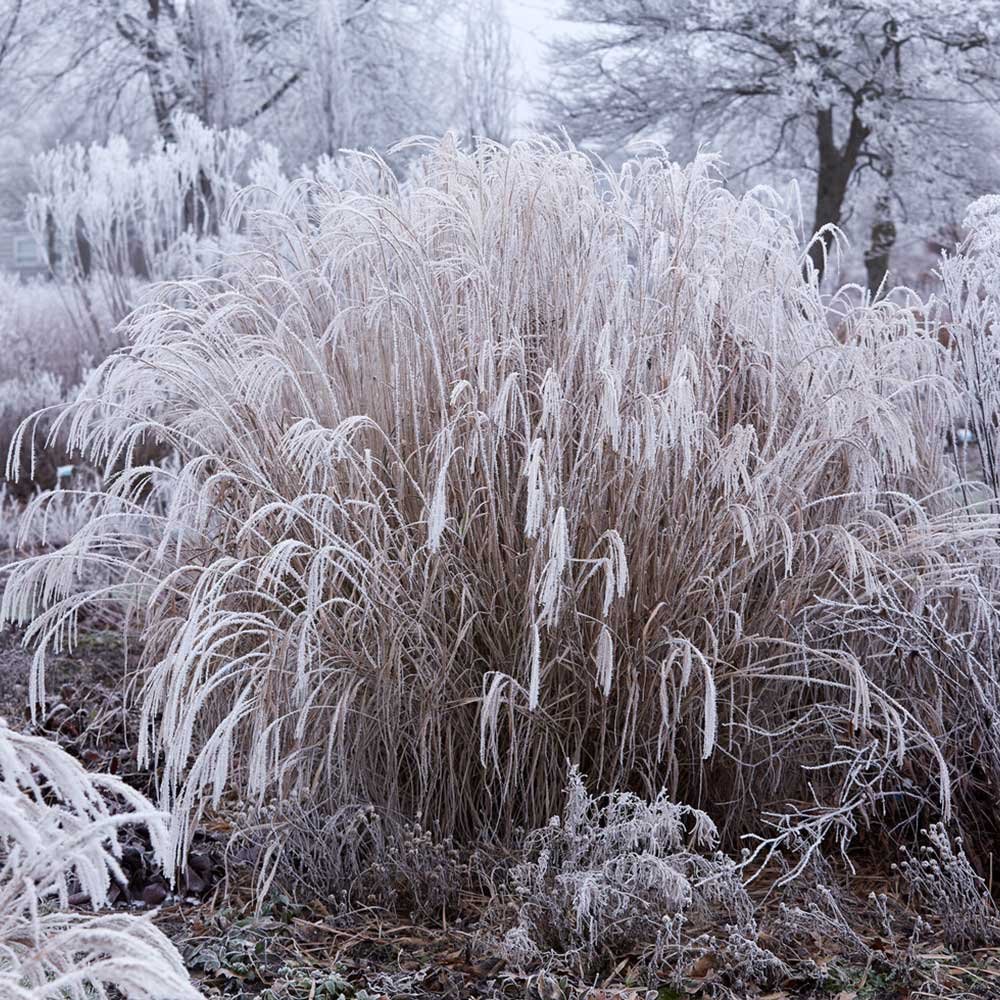
Ontario’s climate, which ranges from hardiness zones 4 to 7, creates an ideal environment for cultivating Little Zebra Grass. The hardy nature of this grass allows it to withstand the province’s cold winters and relish its warm summers.
Zebra grass does excellent in the loamy soils of Southern Ontario where the hardiness conditions are between 5 – 7.
Keep your zebra grass in well drained soil, in full sun exposure, and add some sort of nutrients and your zebra grass will grow tall and proud with vibrant colours and textures.
Transplanting and Establishing Your Little Zebra Grass
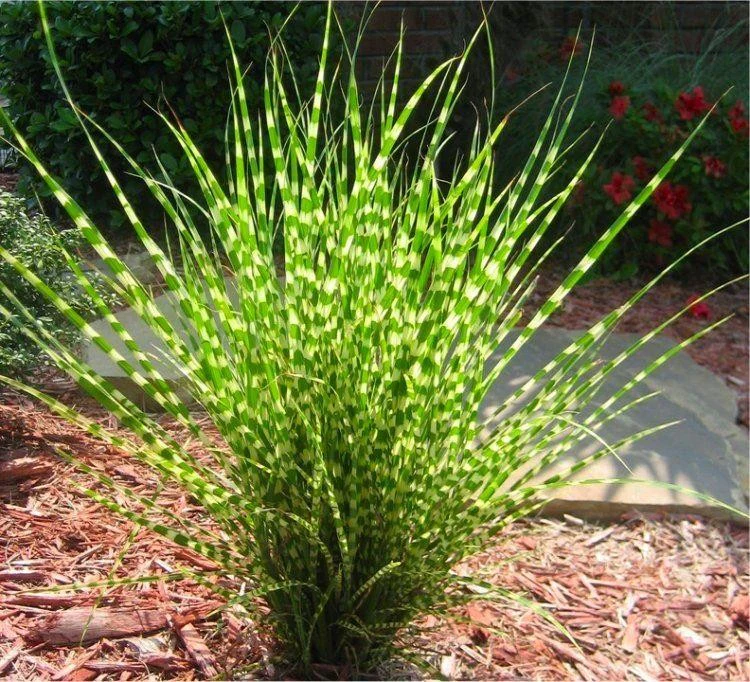
To transplant your zebra plant properly, start by digging a hole that’s twice the size of the root ball of your plant. Carefully position the plant within this space, making sure that the top of the root ball is even with the ground surface.
Next, backfill the hole with soil. As you do this, be mindful to press down gently around the plant to make sure it’s firm and secure in its new location. Overly compacted soil can inhibit the plant’s ability to establish new roots, so avoid applying excessive pressure.
After positioning and securing the plant, give it a thorough watering. This initial deep watering can help the plant settle in its new environment and encourages the roots to start growing into the surrounding soil. After a few days of watering, try adding some plant food to the soil.
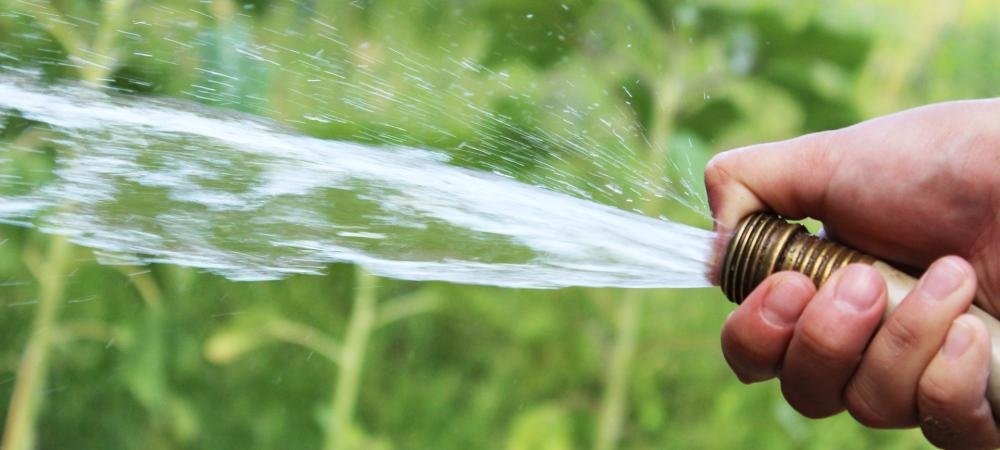
In the days and weeks following the transplant, keep a close eye on your plant. Continue regular watering to maintain soil moisture, but be careful not to overwater as this could lead to root rot.
If you notice any wilting or discolouration, it might be a sign that your grass is undergoing transplant shock, but don’t worry, it’s a common issue that arises when plants are moved to a new location.
Ensure the zebra grass is receiving enough sunlight and consider applying a balanced fertilizer to provide the necessary nutrients for recovery and growth.
By carefully transplanting and establishing your little zebra grass, you’ll pave the way for a healthy, vibrant addition to your garden.
The process may seem involved, but the stunning visual appeal and low maintenance nature of this ornamental grass once they are established, make it well worth the effort.
Best Lighting Conditions For Zebra Grass
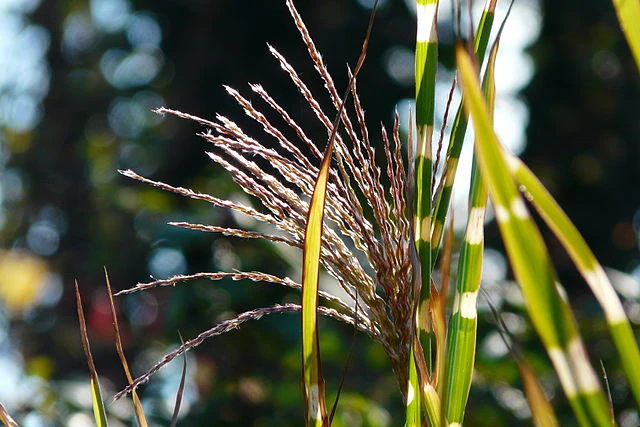
Choosing the right spot for your little zebra grass plays a significant role in its growth and overall appeal. Many people purchase zebra grasses for the purpose of filling in a dry, fully exposed area to the sun and other weather that many other plants can’t handle. Full sun is the best possible place to plant little zebra grass.
When it comes to sunlight, this plant displays a certain degree of flexibility. It thrives best under full sunlight, which means it requires a minimum of six hours of direct sunlight daily.
Full sun exposure allows the plant to produce its iconic, vibrant stripes, making it a striking feature in any garden. However, don’t worry if your garden isn’t bathed in sunlight all day.
Little zebra grass also does well in partial shade. This resilience and adaptability makes the little zebra grass a versatile choice for various garden placements.
Whether it’s positioned along a sunny garden border or nestled within a semi-shaded nook, it will adapt and continue to add a unique aesthetic touch to your landscape.
As you select a site for planting, consider these light exposure, full sun will exhibit its full ornamental potential while partial light will still produce a healthy zebra grass plant, but not at its full potential.
Caring and Maintaining Your Little Zebra Grass

Maintaining and caring for your little zebra grass is a straightforward task, thanks to its resilient nature. It’s critical to provide regular hydration, especially during drought-like conditions, to keep the grass looking green and vibrant.
Although it doesn’t have high nutritional requirements, an annual application of a well-balanced fertilizer can stimulate its robust growth and help keep the plant looking its best all season.
As you may have noticed, i really recommend an all purpose fertilizer such as Miracle-grow.
Another critical part of little zebra grass care involves pruning. This activity is not only for maintaining the aesthetic appeal for the end of the season, but it helps the plant encourage new and healthy growth next season.

At the end of the fall season, before the new growth cycle starts in the spring, trim the plant back to about 6 inches above the ground. This helps remove the old, spent growth, allowing space and resources for the new shoots to thrive in the spring.
By incorporating regular watering, an annual feeding schedule, timely pruning, and vigilant observation, you can ensure your little zebra grass will continue to be a vibrant and attractive addition to your garden with very little effort.
